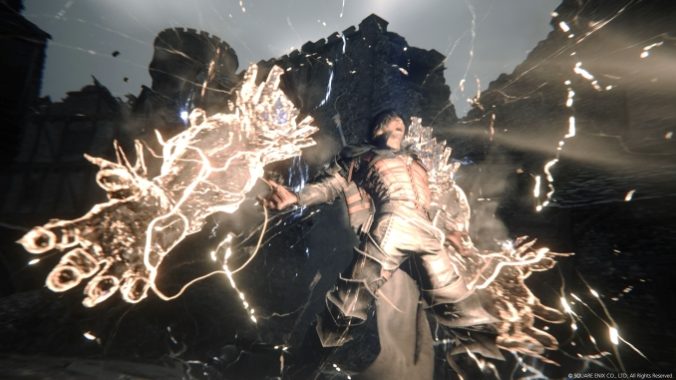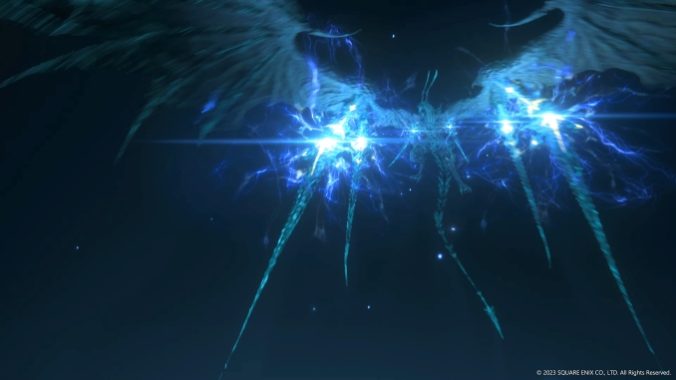Final Fantasy 16 Is An RPG Fitting Of This Era
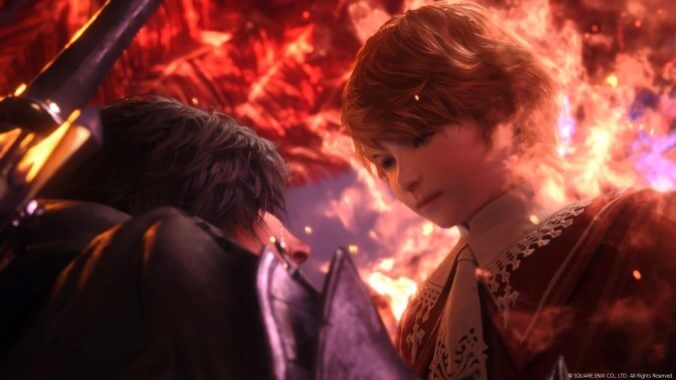
Final Fantasy 16 is heretical. Its prologue alone, a work so clearly in the mold of Game of Thrones more than anything from its own storied lineage, feels… difficult. These perceivable differences have stirred up discourse before the game’s even out. It’s gotten to the point where as of this writing, people have been actively debating what it means to be a Final Fantasy title, namely because naysayers have been looking for any reason to decry the game before getting to fully experience it. I’m not here to evangelize it, and I’m not going to because there are deviations it takes that simply don’t work for me, clear steps away from what has made this series work. But on the way, this moonshot does land itself among some stars that shine particularly bright. And so to the question of “What is a Final Fantasy,” I say this and whatever else dares to wear the moniker and try something, regardless of whether it connects or doesn’t. We don’t own it, but we can work through it.
Taking place at a tumultuous time in the history of Valisthea, Final Fantasy 16 follows Clive Rosfield from his adolescence and into his thirties as he fights to carve out a new world. Though he begins on a journey for personal revenge, his horizons are eventually broadened by the timely intervention of Cid Telamon, a revolutionary hellbent on bettering the situation of Bearers, people of Valisthea who are born with magical abilities only to be foisted off into domestic slavery or serve on the frontlines of a war that’d uphold the institutions that put them there. The state of the realm is, in a word that the cast of Final Fantasy 16 loves to throw out there, “fucked.” Along the way, Clive is reunited with faces he thought long gone, like his childhood friend Jill, and meets new ones, like Cid’s chief scout Gav, who bolster Clive’s spirits and party as he embarks on a quest across the length of Valisthea that has shades of Final Fantasy 7‘s environmentalist themes albeit in a new skin.
Valisthea, though housed in the shell of a game a far cry from what Final Fantasy fans are intimately familiar with, is a deliberate throwback to a medieval fantasy world after some years playing in worlds that have blended settings, and even timelines, and in that regard at least feels partly fresh. Characters joke about the impossibility of flight, mocking the notion of an ancient civilization having anything resembling an “airship,” and thus the towns and villages you come across are small and homely. Dotting the countryside between major destinations like Oriflamme, the capital of the Holy Empire of Sanbreque, and Kanver, these villages make up the breadth of the world of Valisthea and its people. This is at once a disappointing part of Final Fantasy 16, which spends a lot of time talking about the capitals of the world and the forces that govern from those perches, and a boon in disguise. As I can’t speak to what the game isn’t, I can instead say that though the stories of these regions begin in simple places, they are elevated by a lot of the side material that really reckons with the reality of materially changing the makeup and ideology of nations built on prejudices and cruelty, even when it isn’t beneficial to them. That being said, it would’ve been great to get an actual sense for places like Twinside, which instead become spectacular backdrops for run-of-the-mill dungeons that fill the climactic moments of the story and fall away from the focus of the story once you’re done there.
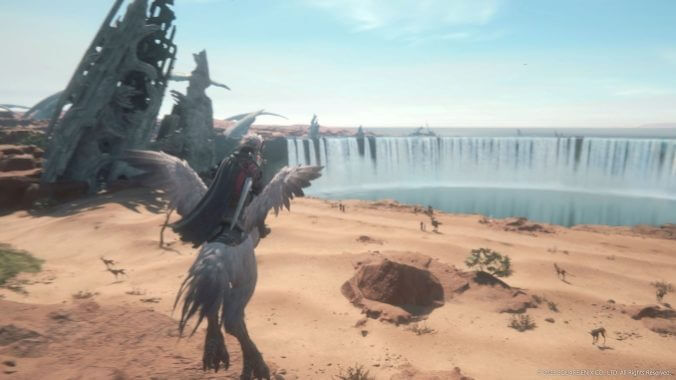
I think these explorations could’ve helped me shake off the feeling that I’d been to Valisthea before. Visually, the game is beautiful but artistically, many of the towns and regions you come to occupy, like Dalimil in the Dhalmekian Republic or Eastpool in Rosaria, feel lacking in identity beyond “town in a desert” or “foggy town.” The occasional skybox and landmark reminds me of the kind of awe Final Fantasy settings tend to inspire, but I’ll be damned if FF16 doesn’t make you work for those kinds of sights. The setting never quite comes alive as its own until a development in the story—the same one I briefly mentioned moments ago that stirs up certain plotlines—forces it into a reactive state that pulls together countless threads and impacts the realm in tangible ways. Even then, what shores up Final Fantasy 16 to me in these moments is its surprisingly strong cast of characters rather than a strong sense of place.
When you’re pulling from a property renowned for its various perspectives, it can probably be intimidating to feel like you have so much ground to cover and need to fill each second in those with arresting drama, but to FF16’s credit, not only is its central storyline compelling but its main players chew through scenes and whole arcs with ease. Whether it be Benedikta’s cruelty front and center, Cid’s casually sexy pirate swagger and radicalism, or Kupka’s utterly unhinged turn later in the game, FF16’s never missing for strong personalities to personify its themes of institutional violence and the fight for a world where people are allowed to live and die on their own terms. Our heroes, Clive and Jill, who are Dominants—people with the ability to summon and channel the abilities and strength of elemental deities—could have been wet blankets but instead spend a lot of their journey together reckoning with their own unwitting roles in the events that have led Valisthea to the point, often referring to themselves as monsters even if they were weapons honed and pointed at innocents by others. Side characters like Martha, a longtime ally to your cause of freeing Bearers, underscore how deeply FF16’s conflicts are felt outside of the main story, which slightly loses sight of its slave-freeing plot in its endgame in favor of the greater free will of man and a tyrannical god. It’s good dark fantasy fare and despite that, its characters come through with so much heart when this really grisly world is coming down on them and all they have is each other. Seeing a sense of camaraderie spark between Clive and the folks at the hideaway and then watching it grow over the years together is really lovely thing, especially when you get over the initial hump of thinking Clive’s anything other than a deeply tragic protagonist who was ripped out of his life directly after a traumatizing event.
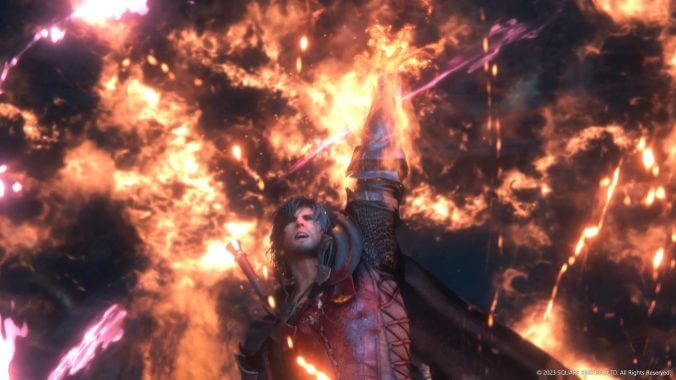
-

-

-

-

-

-

-

-

-

-

-

-

-

-

-

-

-

-

-

-

-

-

-

-

-

-

-

-

-

-

-

-

-

-

-

-

-

-

-

-

